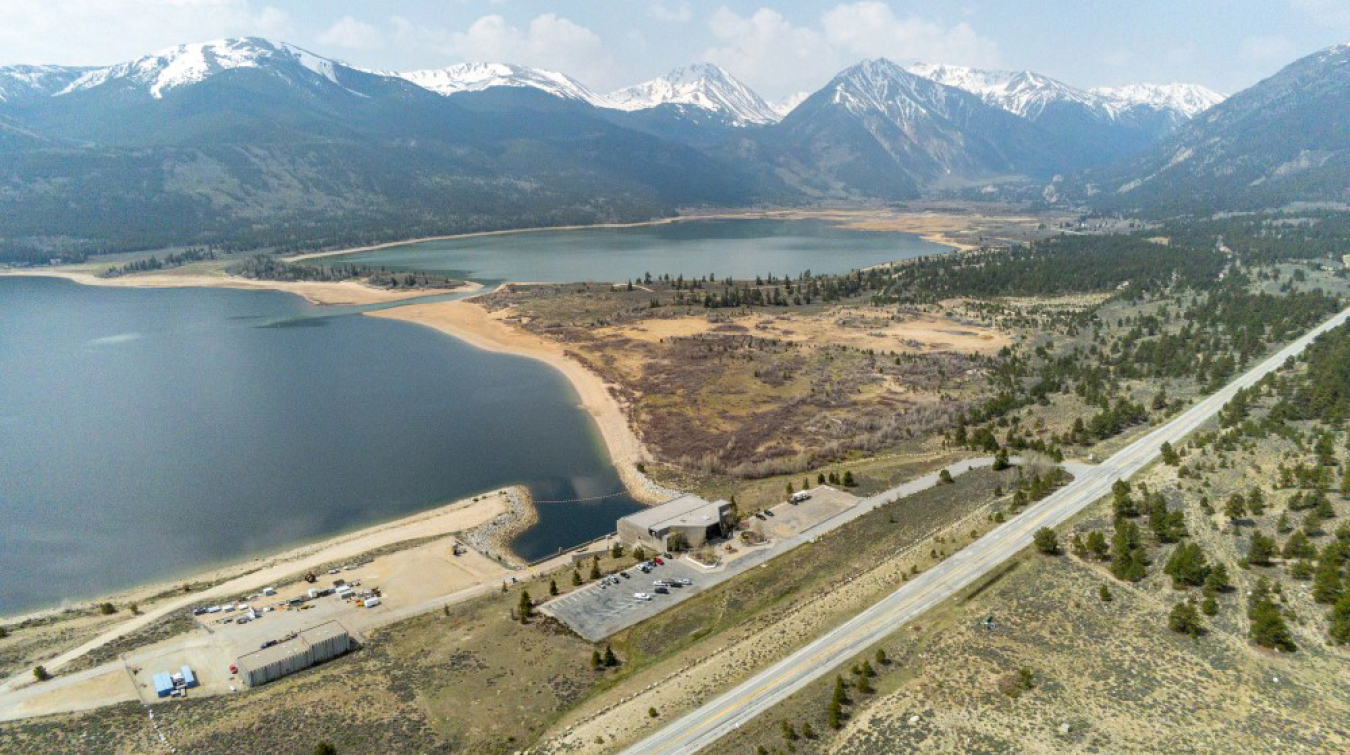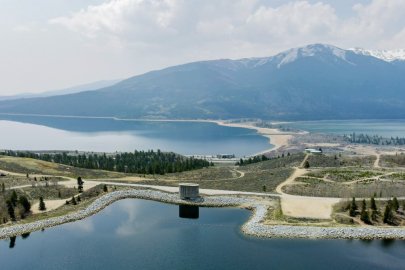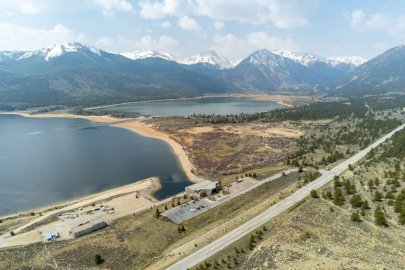Researchers analyzed the life cycle greenhouse gas impacts of energy storage technologies and found that pumped storage hydropower has the lowest global warming potential on average.
Water Power Technologies Office
March 14, 2024Hydropower Program
Grid Reliability, Resilience, & Integration (HydroWIRES)
Project Name: PSH Characterization and Capacity Expansion Model Enhancements
Project Team: National Renewable Energy Laboratory
Lead Recipient Location: Golden, Colorado

Researchers from the National Renewable Energy Laboratory (NREL) conducted an analysis that demonstrated that closed-loop pumped storage hydropower (PSH) systems have the lowest global warming potential (GWP) across energy storage technologies when accounting for the full impacts of materials and construction.
PSH is a configuration of two water reservoirs at different elevations. Closed-loop PSH reservoirs are not connected to a naturally flowing water feature (like a river) and use a turbine/pump and generator/motor to move water between reservoirs and generate electricity. Though PSH has been around for more than 100 years, limited information is available about greenhouse gas emissions associated with its use.
The findings from NREL's study, reported in the journal Environmental Science and Technology, provide a life cycle assessment of new closed-loop PSH in the United States and assess its GWP.

A National Renewable Energy Laboratory analysis found that closed-loop pumped storage hydropower systems have the lowest global warming potential across energy storage technologies when accounting for the full impacts of materials and construction.
Researchers based their findings on 39 preliminary designs from 35 proposed closed-loop PSH sites in the contiguous United States. The base scenario also assumed the electricity mix would entirely come from renewable technologies. Researchers found that PSH, on average, offered the lowest GWP when compared to compressed-air energy storage, utility-scale lithium-ion batteries, utility-scale lead-acid batteries, and vanadium redox flow batteries.
These results demonstrate that enabling renewable electricity deployment by adding PSH to the grid will result in lower climate change impacts and contribute more to achieving the country's clean energy goals compared to other grid-scale energy storage technologies.
-
 A new map and web tool helps hydropower stakeholders understand how the Inflation Reduction Act's investment tax credits can be used to develop pumped storage hydropower projects across the United States.
A new map and web tool helps hydropower stakeholders understand how the Inflation Reduction Act's investment tax credits can be used to develop pumped storage hydropower projects across the United States. -
 Two national laboratories issued three publications that analyze how hydropower's value is likely to increase as the United States transitions to a clean energy grid.
Two national laboratories issued three publications that analyze how hydropower's value is likely to increase as the United States transitions to a clean energy grid. -
 Idaho National Laboratory, working with Fall River Electric Cooperative, demonstrated how the new Microgrid in a Box can strengthen small hydropower plants’ abilities to help electric grids recover after a blackout or power disturbance.
Idaho National Laboratory, working with Fall River Electric Cooperative, demonstrated how the new Microgrid in a Box can strengthen small hydropower plants’ abilities to help electric grids recover after a blackout or power disturbance. -
 New study identified more than 1,800 sites in Alaska where the state could develop pumped storage hydropower projects to help support its transition to clean energy.
New study identified more than 1,800 sites in Alaska where the state could develop pumped storage hydropower projects to help support its transition to clean energy. -
 Researchers analyzed the life cycle greenhouse gas impacts of energy storage technologies and found that pumped storage hydropower has the lowest global warming potential on average.
Researchers analyzed the life cycle greenhouse gas impacts of energy storage technologies and found that pumped storage hydropower has the lowest global warming potential on average. -
 National laboratory report can improve decision-making on linings used at pumped storage hydropower facilities, which can help make these facilities more resilient and strengthen their benefits to the grid.
National laboratory report can improve decision-making on linings used at pumped storage hydropower facilities, which can help make these facilities more resilient and strengthen their benefits to the grid.
WPTO's hydropower e-newsletter features news on R&D and applied science to advance sustainable hydropower and pumped-storage technologies.
The WPTO e-newsletter brings funding opportunities, events, publications, & hydropower and marine energy updates directly to your inbox.


